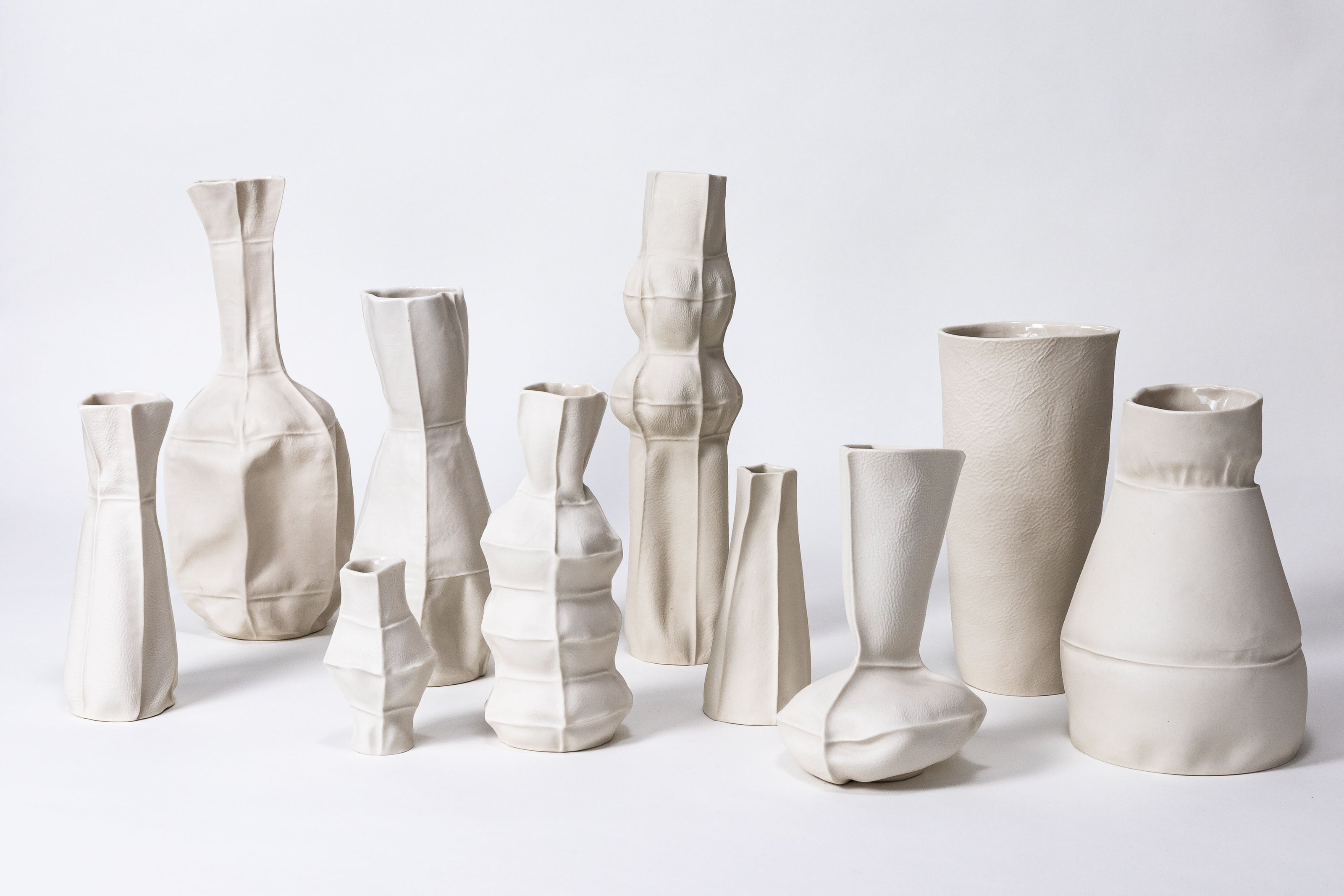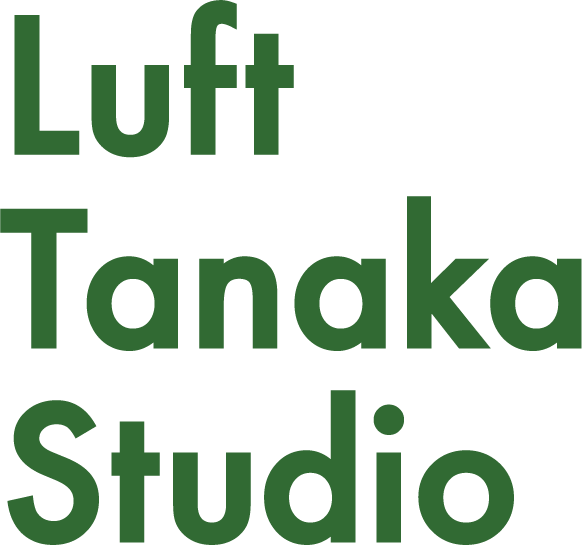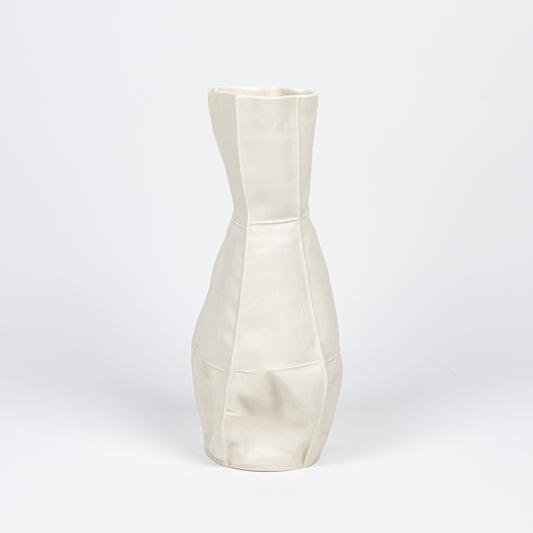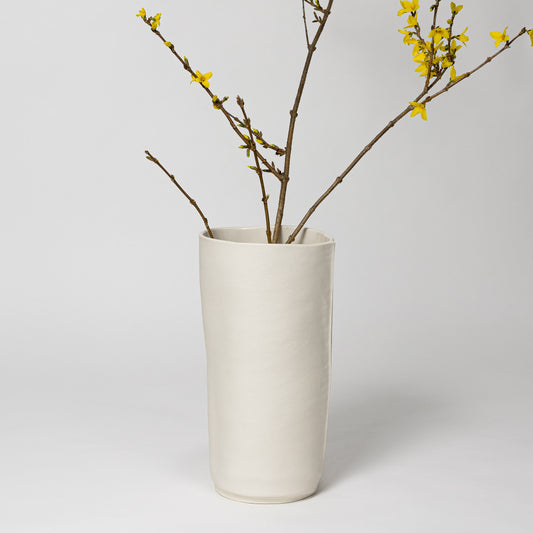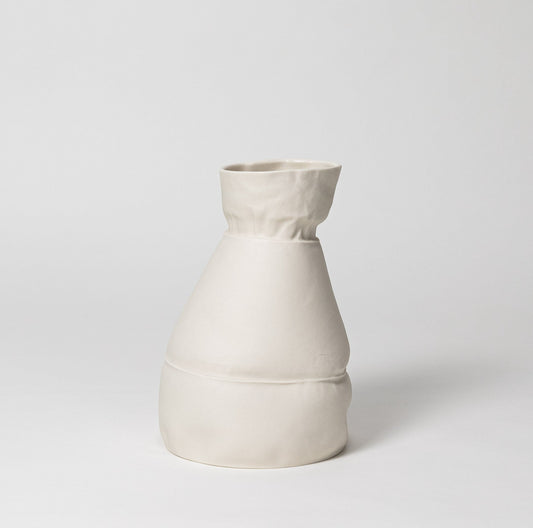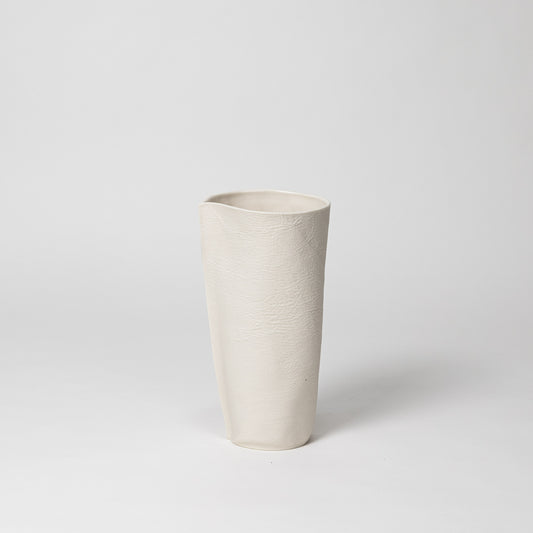The Kawa Series was conceived in 2012 as part of Luft’s thesis project at the Parsons School of Design. Guided by his wabi-sabi sensibilities, Luft became obsessed with creating a production system where the process dictated the form—and where even objects made in multiples could still be one-of-a-kind. Over the course of several months, he experimented with various materials, but his "aha" moment came one afternoon when he stumbled upon a discarded leather couch on a Manhattan curb. (“Kawa” is Japanese for “leather” or “skin.”)
At the time, Luft had been studying slip-casting, a traditional ceramic technique used to produce nearly identical objects, typically using solid plaster molds. His technical understanding allowed him to see potential in the discarded leather. So, in true industrial design fashion, he pulled out a utility knife, stripped the couch of its leather, and took the materials back to his studio for immediate experimentation.
Through extensive testing of different types of leather and methods for creating the molds, Luft gradually refined his process. Early attempts were messy, with many pieces not surviving the kiln, but soon his test pieces began to reveal the hallmarks of his signature style: weird yet beautiful, hard yet soft, expressive, and full of personality.
